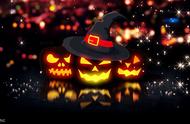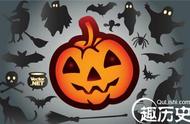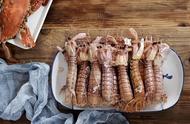Photo by Yannick Menard on Unsplash
7. GETTING SPOOKED BY BLACK CATS
不祥的黑猫
The association of black cats and spookiness actually dates all the way back to the Middle Ages, when these dark kitties were considered a symbol of the Devil. It didn’t help the felines’ reputations when, centuries later, accused witches were often found to have cats, especially black ones, as companions. People started believing that the cats were a witch’s “familiar”—animals that gave them an assist with their dark magic—and the two have been linked ever since.
黑猫和幽灵的联系可以追溯到中世纪,当时黑色的小猫被视为魔鬼的象征。即使在几个世纪以后,黑猫的名声也没有好转,因为被指控为巫婆的人通常都有猫作伴,特别是黑猫。人们开始相信猫是巫婆“亲密”的伙伴,并能助长她们的黑魔法。自此之后两者便常常被联系在一起。

Photo by Gabi Miranda on Unsplash
8. BOBBING FOR APPLES
咬苹果游戏
This game traces its origins to a courting ritual that was part of a Roman festival honoring Pomona, the goddess of agriculture and abundance. Multiple variations existed, but the gist was that young men and women would be able to foretell their future relationships based on the game. When the Romans conquered the British Isles, the Pomona festival was blended with the similarly timed Samhain, a precursor to Halloween.
咬苹果游戏的起源可以追溯到一个求爱仪式。它是罗马节日的一部分,用来纪念农业和丰饶女神波莫娜。这个游戏有多种变化,但主旨在于年轻男女能够根据游戏来预测他们未来的关系。罗马人征服不列颠群岛时,波莫纳节与几乎同时期的萨温节(万圣节的前身)融合在一起。
precursor[priˈkɜːrsər]: n. 前兆
9. DECORATING WITH BLACK AND ORANGE
用黑色和橙色作为装饰主色调
The classic Halloween colors can also trace their origins back to the Celtic festival Samhain. Black represented the “death” of summer while orange is emblematic of the autumn harvest season.
这两个经典的万圣节颜色也可以追溯到凯尔特人的萨温节。黑色象征着夏天的“死亡”,而橙色则象征着秋收季节。

Photo by Paige Cody on Unsplash
10. PLAYING PRANKS
玩恶作剧
As a phenomenon that often varies by region, the pre-Halloween tradition, also known as “Devil’s Night”, is credited with a different origin depending on whom you ask. Some sources say that pranks were originally part of May Day celebrations. But Samhain, and eventually All Souls Day, seem to have included good-natured mischief. When Scottish and Irish immigrants came to America, they brought along the tradition of celebrating Mischief Night as part of Halloween, which was great for candy-fueled pranksters.
万圣节前的恶作剧传统也被称为“魔鬼之夜”,经常因地而异。不同的人对它的起源有着不同的回答。有一些来源称,恶作剧原本是五一劳动节庆祝活动的一部分。但是萨温节,以及后来的万灵节,似乎就已经包含了善意的恶作剧。苏格兰和爱尔兰移民来到美国,他们也带来了在万圣节前夕庆祝“恶作剧之夜”的传统,这对于酷爱糖果的恶作剧者来说太棒了。
11. LIGHTING CANDLES AND BONFIRES
点燃蜡烛和篝火
These days, candles are more likely than towering traditional bonfires, but for much of the early history of Halloween, open flames were integral in lighting the way for souls seeking the afterlife.
如今,在万圣节庆祝活动中,人们更有可能点燃蜡烛而不是高耸的传统篝火。但在万圣节的早期历史中,明火在为寻求来世的灵魂照亮道路方面是不可或缺的。

Photo by Derrick Brooks on Unsplash
12. EATING CANDY APPLES
吃糖苹果
People have been coating fruit in sugar syrups as a means of preservation for centuries. Since the development of the Roman festival of Pomona, the goddess often represented by and associated with apples, the fruit has had a place in harvest celebrations. But the first mention of candy apples being given out at Halloween didn’t occur until the 1950s.
几个世纪以来,人们一直将水果裹在糖浆中保存。随着罗马波莫纳节的发展,苹果经常作为女神波莫纳的代表,与之联系在一起,因此苹果在丰收庆典中也占有一席之地。但直到20世纪50年代,才首次提到在万圣节时赠送糖苹果。
13. SPOTTING BATS
蝙蝠
It’s likely that bats were present at the earliest celebrations of proto-Halloween, not just symbolically but literally. As part of Samhain, the Celts lit large bonfires, which attracted insects. The insects, in turn, attracted bats, which soon became associated with the festival. Medieval folklore expanded upon the spooky connotation of bats with a number of superstitions built around the idea that bats were the harbingers of death.
蝙蝠很可能出现在最早的万圣节庆祝活动中,这种说法不仅是象征性的,而且有事实佐证。作为萨温节的一部分,凯尔特人点燃篝火来吸引昆虫。这些昆虫反过来又吸引了蝙蝠,因此蝙蝠与萨温节很快联系在一起。中世纪的民间传说扩展了蝙蝠令人毛骨悚然的内涵,围绕着蝙蝠是死亡来临的前兆存在着许多迷信说法。
harbinger[ˈhɑːrbɪndʒər]: n. 先驱;前兆;预告者
14. GORGING ON CANDY
吃糖果
The act of going door-to-door for handouts has long been a part of Halloween celebrations. But until the middle of the 20th century, the “treats” kids received were not necessarily candy. Toys, coins, fruit, and nuts were just as likely to be given out. The rise in the popularity of trick-or-treating in the 1950s inspired candy companies to make a marketing push with small, individually wrapped confections. People obliged out of convenience, but candy didn’t dominate at the exclusion of all other treats until parents started fearing anything unwrapped in the 1970s.
挨家挨户地“讨糖果”一直是万圣节庆祝活动的一部分。但在20世纪中叶前,孩子们得到的“款待”不一定是糖果,也有可能得到玩具、硬币、水果和坚果。20世纪50年代,“不给糖就捣蛋”活动的兴起,促使糖果公司纷纷推出独立包装的小糖果。人们出于便利才考虑购买这种小糖果。但直到20世纪70年代,家长们开始担心任何未经包装的东西有卫生隐患,糖果才开始在这些款待物中占据主导地位。















